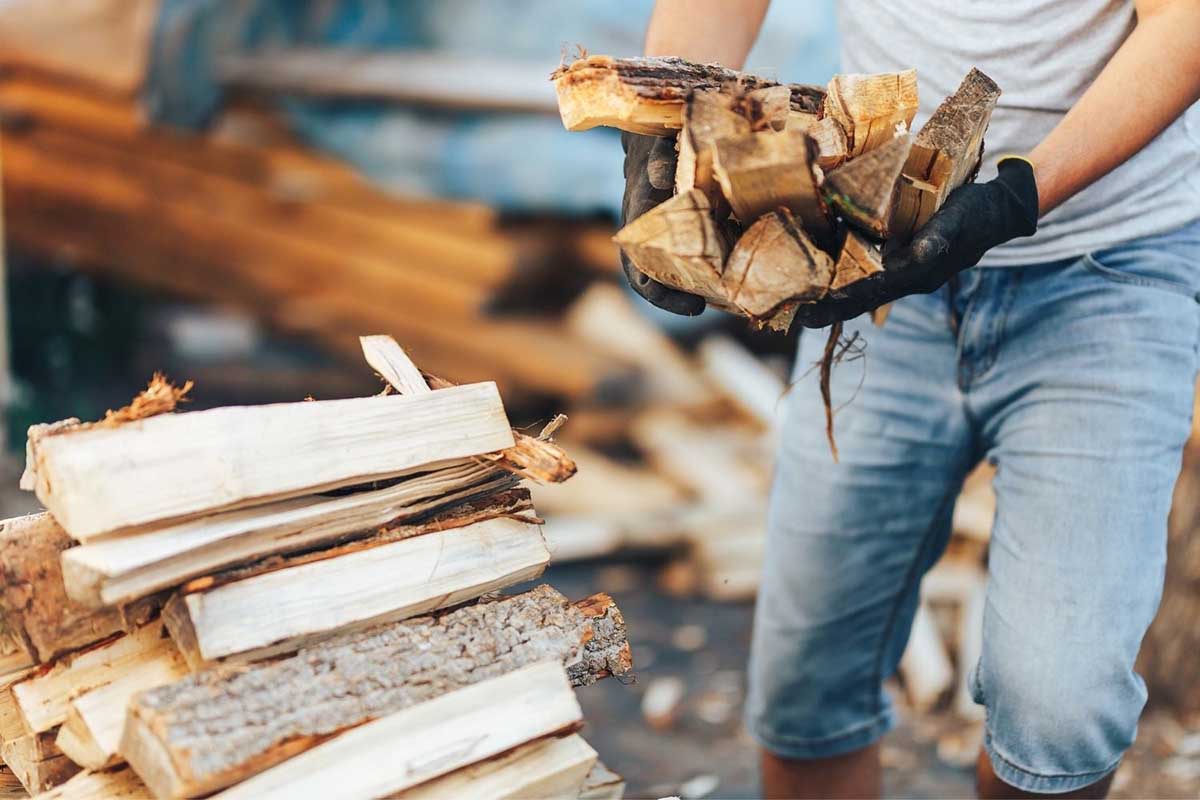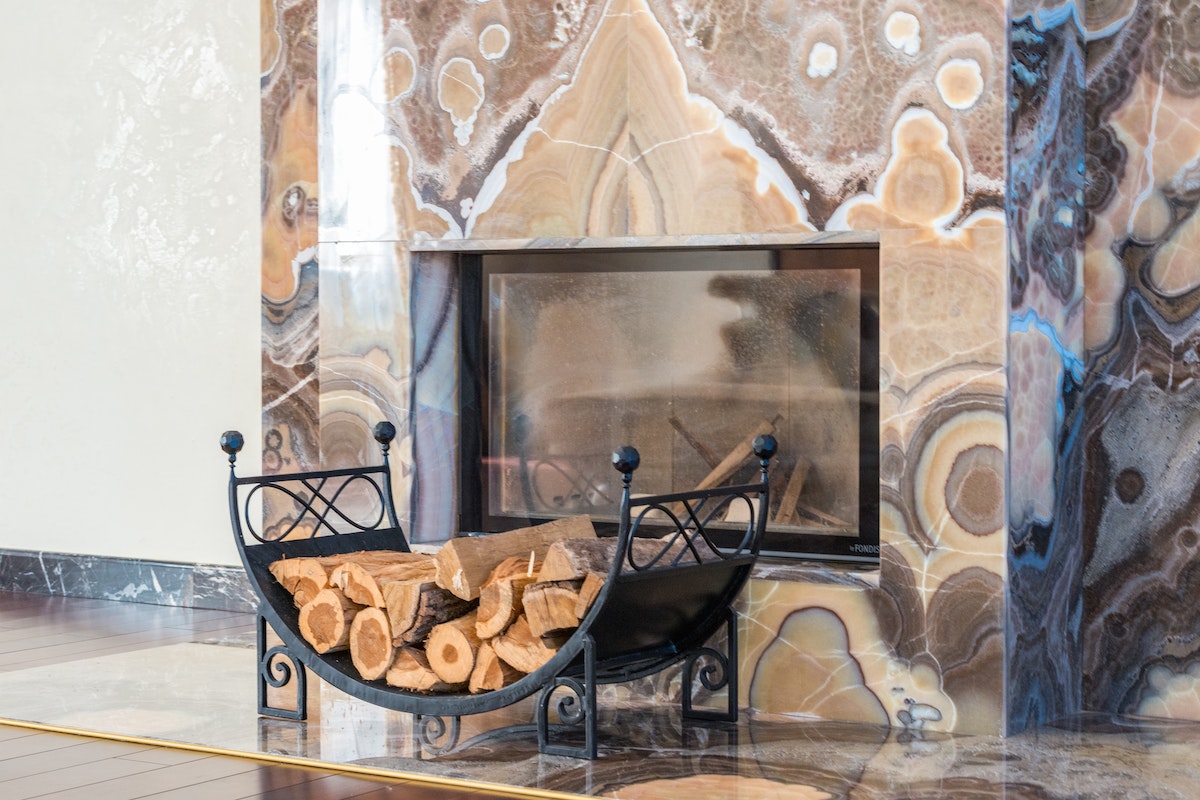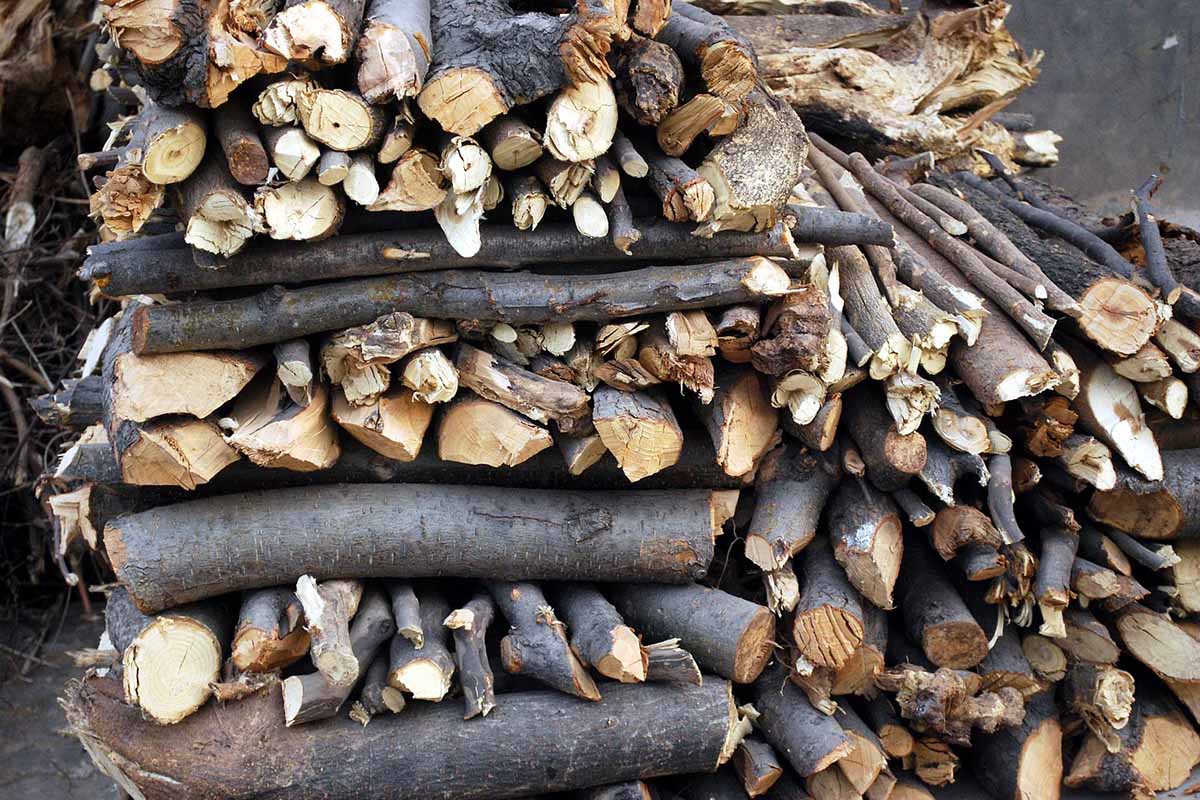Having a well-stacked supply of firewood is crucial for efficient home heating and cozy fire pit evenings. To ensure your firewood remains dry and accessible, it’s essential to learn how to stack firewood it properly.
In this comprehensive guide, we’ll explore the best practices, from selecting the right location to creating stable stacks with adequate airflow.
Let’s dive in and discover the secrets to a perfectly stacked firewood stack that will keep you warm all season long!
How To Stack Firewood Properly
Properly stacking firewood is essential for several reasons. First and foremost, a well-stacked pile ensures safety by preventing collapses that could harm people or property.
Additionally, proper stacking promotes efficient burning, allowing the firewood to burn evenly and produce optimal heat output.
Moreover, a well-arranged stack enables better airflow, facilitating the drying and seasoning process of the wood.
By stacking firewood correctly, you can maximize the lifespan and usability of your supply.
Why is Stacking Wood Important?
Stacking wood is important for proper airflow, drying, and seasoning of the firewood, leading to more efficient and effective burning.
It also helps prevent pest infestations, optimizes storage space, and facilitates easy access and management of the woodpile.
Proper stacking ensures better quality and usability of the stack firewood, enhancing the overall fire-burning experience.
7 Popular Stacking Firewood Techniques

Firewood stacking techniques are essential for creating a well-organized and stable firewood rack. Let’s explore some popular wood stacking techniques:
The Pyramid Method
Start by laying two large logs parallel to each other on the ground as the base.
Continue adding layers of logs, each slightly smaller disc shape than the previous one, forming a pyramid shape.
This method allows for good airflow and provides stability throughout the stack.
The Crisscross Method
Begin by placing two logs parallel to each other as the base. Lay the next layer square cut logs perpendicular to the base logs, crossing over them in a crisscross pattern.
Alternate the direction of the logs with each layer, creating an interlocking pattern. This method offers excellent stability and is visually appealing.
The Lean-To Stacking Method
Suitable for temporary stacks or quick access to wood, this method involves placing two larger logs on the ground at an angle against a support structure, such as a wall or tree. Lean the remaining logs against the angled logs, creating a sloping structure.
While it may not provide long-term stability, it allows for efficient drying and easy access to the stack wood.
The Holz Hausen Method
Also known as a round woodpile, this method involves placing large logs in a circular pattern on the ground.
The ends of the logs meet in the center, forming a cone shape. Each layer parallel logs consists of slightly smaller logs, creating a visually striking and space-efficient stack.
The circular shape promotes optimal airflow, and the interlocking logs provide stability.
The Stack-and-Stick Method
This straightforward technique involves driving stakes or posts into the ground to create a rectangular or square perimeter. The firewood is stacked tightly within the perimeter, with logs interlocked for stability.
Additional stakes or posts can be used for added support. This way to stack firewood is convenient for easy disassembly or movement of the various pieces of wood.
The Tiered Shelving Method
The tiered shelving method is a practical technique when you have limited ground space and want to maximize storage capacity.
Build a series of sturdy shelves or racks at different heights, resembling a staircase or tiered structure.
Stack the firewood neatly on each shelf, ensuring proper airflow between the logs. This method allows for easy organization, access, and monitoring of your firewood supply.
End Pillar Wood Stack Method
The end pillar wood stack is a technique that adds stability to your firewood stack. It involves placing two sturdy logs vertically at each end, creating pillars that evenly distribute the weight and prevent collapse.
To create an end pillar wood stack, choose stable logs as pillars, position them vertically, and snugly stack the firewood against them.
This method ensures a stable and secure stack for your firewood storage.
8 Stack Firewood Decor Ideas

Enhance the visual appeal of your firewood stack with these decor ideas:
- Geometric Patterns: Arrange logs in herringbone or chevron patterns for a modern touch.
- Color Coordination: Sort wood by color or type for an eye-catching display.
- Tiered Stacking: Create multiple levels within the stack using sturdy dividers.
- Incorporate Planters: Add potted plants or trailing vines for a touch of greenery.
- Stylish Firewood Rack: Invest in a decorative rack that combines functionality and design.
- Contrast with Background: Create an interesting contrast against a plain wall or fence.
- Outdoor Lighting: Install lights near the stack to create a cozy ambiance.
- Natural Elements: Use stones, pinecones, or branches as decorative accents.
Transform all your wood and stacks into an attractive focal point with these creative decor ideas.
Seasoning Firewood

Properly seasoning firewood is crucial for optimal burning and heat output. Seasoning refers to the process of drying the wood to reduce its moisture content.
The time required for seasoning more firewood varies depending on factors such as wood type, size, and environmental conditions. Generally, firewood needs to be seasoned for a minimum of six months to a year.
Choosing the Right Location for Your Firewood Stack
Selecting the right location for your firewood is crucial. Ideally, you should choose a spot that is close to your home or fire pit for convenient access. It’s essential to keep the stack away from structures or trees to minimize the risk of fire.
Find a level area that is well-drained to prevent water accumulation around the wood. Consider placing the stack in an area that receives sunlight, as sunlight aids in drying and seasoning the wood.
Gathering and Selecting Firewood
When gathering firewood, follow best practices for quality and effectiveness.
Choose hardwoods like oak, maple, or birch for longer burn times and more heat. Use dry, seasoned firewood to avoid difficulty in burning and excessive smoke.
Cut the wood into suitable lengths and remove branches, bark, and debris before stacking.
Creating Airflow Channels
To enhance the drying and seasoning process of your firewood, you need to create airflow channels within the stack your firewood.
Leave small gaps or spaces between the logs, allowing air to circulate freely through wood house. These channels promote ventilation and facilitate the removal of moisture from the wood.
Adequate airflow helps to prevent mold, mildew, and rot, ensuring the firewood remains dry and ready to burn efficiently.
Keeping The Stack Of Firewood Covered
Covering the entire stack of firewood is vital for proper storage. It protects the wood from rain, snow, and excessive moisture, ensuring it remains in good condition and ready to use.
Moisture is a major threat to firewood, making it harder to ignite and burn efficiently. By covering the stack, you create a barrier that shields the wood from moisture, preserving its quality.
Additionally, covering the whole stack also prevents pests and inhibits mold and mildew growth, keeping the firewood clean and free from infestations.
This simple step extends the lifespan of the wood, maximizes its usability, and provides you with dry, well-preserved firewood for your needs.
Proper Firewood Storage
Proper firewood storage is crucial for maintaining quality. Use a rack or storage bin indoors, ensuring airflow and keeping wood off the ground. Choose a dry, well-ventilated area away from fire hazards.
For outdoor storage, consider sheds or open-sided structures. Keep the stack organized and accessible.
Maintenance of Stack Firewood
Regular maintenance is necessary to ensure the longevity and usability of your firewood stack.
Check the moisture content of the wood periodically using a moisture meter. The ideal moisture content for firewood is typically below 20%.
Remove any green or wet wood from the stack to avoid issues with burning and excessive smoke. Inspect the stack for signs of pests such as termites or ants and take appropriate measures to prevent infestations.
What are Some Main Firewood Stacking Tips?
To ensure an efficiently stacked firewood pile, consider the following tips:
1. Choose a Suitable Location
Select a location for your firewood stack that is well-drained and provides protection from excessive moisture. Avoid placing the stack too close to structures or trees that could pose a fire hazard. Adequate sunlight and ventilation are also important factors to consider.
2. Clear and Level the Ground
Before stacking, clear the area of any debris or vegetation. Level the ground to create a stable base for the stack. This helps prevent uneven settling and maintains the integrity of the stack.
3. Use Proper Stacking Techniques
Utilize one of the recommended firewood stacking techniques mentioned earlier, such as the pyramid method or crisscross method. These techniques provide stability, allow for airflow, and promote efficient drying.
4. Stack Similar Sizes Together
Group logs of similar lengths and diameters together when stacking. This helps create a more stable and uniform stack. It also allows for easier access when selecting firewood for burning.
5. Stack Seasoned Wood Separately
If possible, separate seasoned wood from green or unseasoned wood within the stack. This helps you easily identify and prioritize the wood that is ready for burning. Seasoned wood should be stacked towards the front of the stack for convenient access.
6. Consider Covering the Stack
Depending on the weather conditions and the duration of storage, covering the stack with a tarp or firewood cover can provide additional protection from rain, snow, and excessive moisture. Ensure the cover extends beyond the edges of the stack to keep the wood dry.
7. Regularly Maintain and Rotate the Stack
Periodically inspect the stack for signs of settling, leaning, or instability. Make adjustments as necessary to maintain a sturdy and secure stack. Rotate the wood within the stack to ensure even drying and prevent any pieces from becoming overly seasoned or deteriorating.
Conclusion
Master the art of stacking firewood with our comprehensive guide! Learn the importance of proper techniques, location selection, and safety precautions.
Organize your firewood for a steady supply of high-quality, well-seasoned wood.
Enjoy the warmth and comfort of a perfectly used wood stacked, firewood pile!






